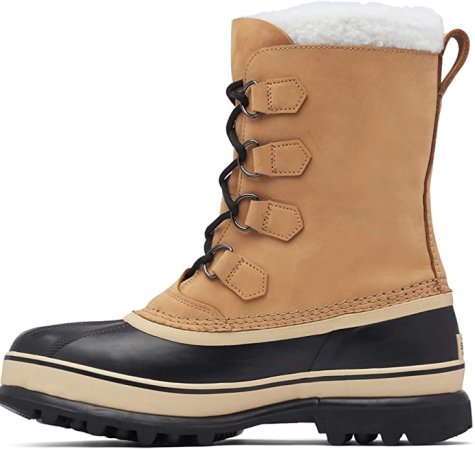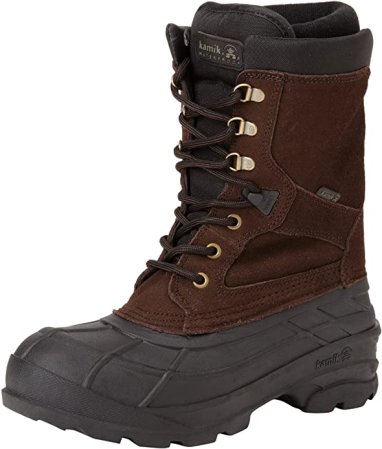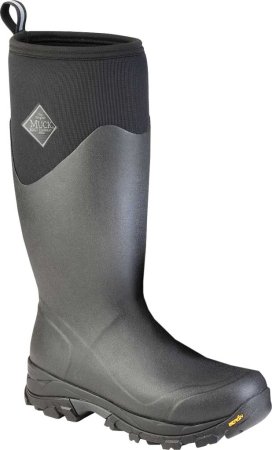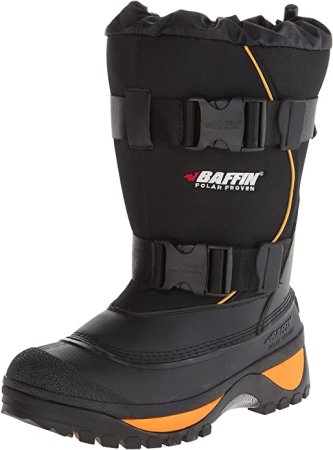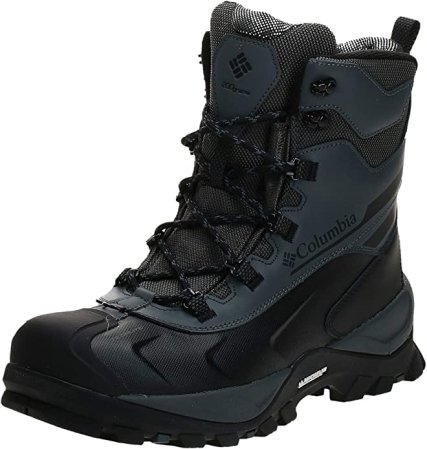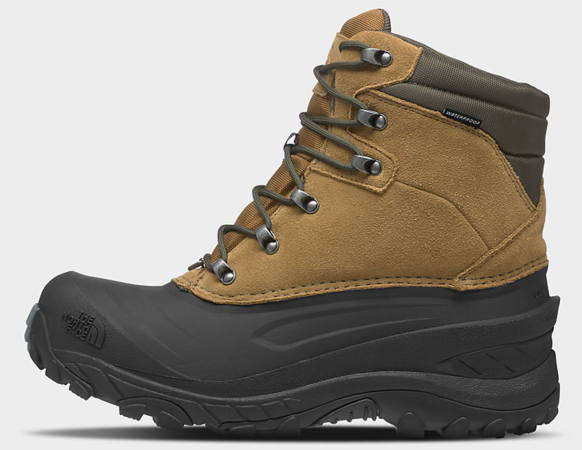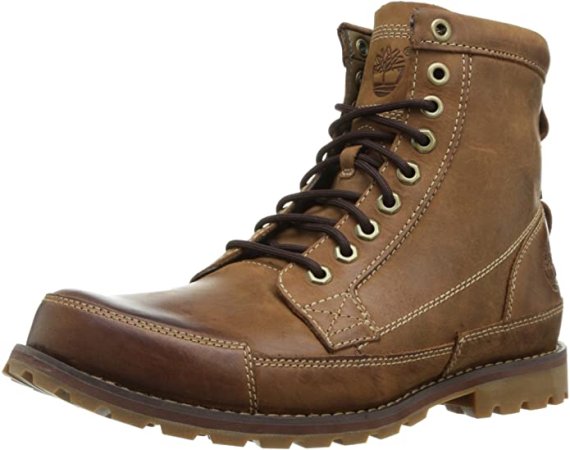

We may earn revenue from the products available on this page and participate in affiliate programs.
Gentlemen, winter is when we do some of our best work. Long months of shortened daylight and frigid temperatures are your time to shine. Chop wood, pull fish out of frozen lakes, and drive a team of sled dogs through a blizzard to deliver medicine to kids–you know, be legendary. In between your acts of heroism, you might find yourself shoveling the driveway or building snowmen with the kids. No matter what winter throws at you, give your feet the protection they need with a pair of quality snow boots. If the cold is making you numb, water is soaking your socks, or snow is falling into your boots, you won’t be much good to anyone. Luckily, there are plenty of options that provide just what you need.
The thing is, all snow boots are not the same. Staying warm and dry all winter isn’t as easy as picking the best boot and being done with it. As with any piece of gear, the key is matching your equipment to the tasks at hand. The most rugged boots are unbelievably warm, but they’ll also have you walking like the world’s scariest paranormal creature. Lightweight boots are nearly as lightweight as high-top sneakers, but they sacrifice a lot of insulation in the name of comfort. Most of you can probably get by with something in the middle, but if you live someplace where winter is the dominant season, it’s worth investing in different snowboots for different activities.
We found snow boots that even a Viking would be proud to wear in the harshest conditions and a few lighter options for enjoying milder winters as a man about town. We scoured the men’s snow boot market to find options for every use and budget. Read on to learn about the features and materials that make each of these boots worthy of a spot on our gear roundup.
Sorel Caribou
Kamik Nationplus
Muck Boot Arctic Ice
Baffin Wolf
Columbia Bugaboot
North Face Chilkat IV
Timberland Earthkeeper
Types of snow boots
Every snow boot is designed for a specific environment. Traditional snow boots use leather, thick rubber soles, and a fluffy cuff to keep you warm for extended periods in deep snow. Others are more like cold-weather hiking boots that prioritize the mobility and traction you need to stay active when temperatures drop. In warmer climates, look for a snow boot that combines waterproof protection against mud and slush with more insulation than you’d get from a rain boot. Finally, style-forward options will keep you warm and comfortable while still being able to serve as your all-day boot. If you can, we recommend picking up a few pairs so you’re ready for whatever winter throws at you.
Key features of snow boots
Insulation
One of snow boots’ primary functions is keeping your feet warm. Take a look at how each boot is built. How thick is the insulation? What is it made of? New materials can be much more compact than traditional insulation, so thicker may not always mean better.
Water resistance
Even in warmer climates, wet feet can spell misery and even present a health risk. All good snow boots will offer a layer of protection against rain and slush. Some are essentially cold-weather rain boots, and that might be just what you need.
Height
When you’re dealing with snow, sometimes a little extra height is necessary to keep it from falling into your boots. If you’re staying within city limits for work or running errands, a shorter boot that’s comfortable indoors and outdoors might suit you better. Look for boot shaft heights ranging from just above the ankle to mid-calf.
Price
Snow boot pricing is determined by the features they offer, not necessarily by the quality of their construction. Expect to pay anywhere from $60 to $300. Before you spend top-dollar on a boot built for Arctic exploration, determine what features are most important to you.
Benefits of snow boots
After winter coats, snow boots might be the most important piece of clothing you can have when the snow starts to fall. At the lighter end of the spectrum, snow boots offer a little more insulation and waterproofing than casual or hiking boots. The warmest options are sufficient for arctic expeditions or outdoor jobs in subzero temperatures. When you’re shopping for a pair of snow boots, you’ll want to think about what you want to get out of them and pick something that matches your prioritization of warmth, waterproofing, and style.
Snow boot pricing
Basic snow boots for men start around $60. These might not have frills and innovative features, but they’ve proven their merit for decades so you can buy with confidence. Moving up in price will get you more advanced insulation, better water protection, more fashionable design, or some combination of the three. Men’s snow boots can exceed $200 in price, but you can trust that you’re getting your money’s worth. Luckily, there’s something good at every price in between, so use our recommendations to find exactly what you need.
